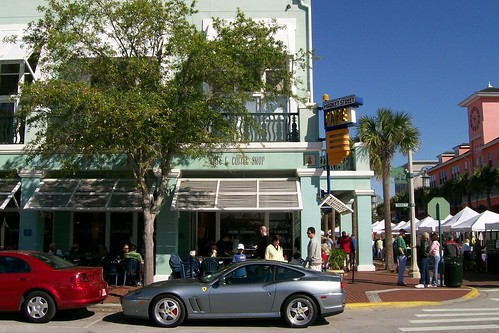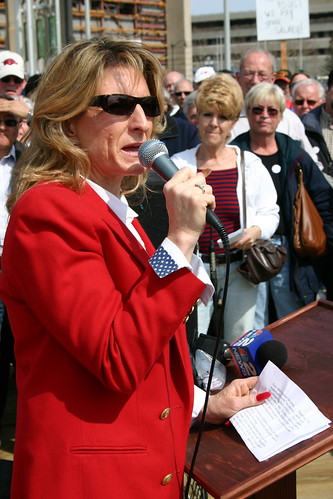 1. The Buffalo News’ Jerry Zremski has an interesting piece about Williamsville native Andrea Bozek, the current head of communications for the National Republican Campaign Committee. Tagged as fighting a war on the “war on women”, the actual substance of the piece reveals something quite different. Rendered an embarrassment by the ignorant mouth-noises of some Republican politicians and commentators, the Republicans realize that they need to attract women by, e.g., not repelling them. So, she’s not so much going after Democrats as much as she is counseling Republicans to tamp down any misogynistic utterances or actions they might be contemplating, and to focus on a handful of issues affecting contemporary women that won’t offend any Republican principles.
1. The Buffalo News’ Jerry Zremski has an interesting piece about Williamsville native Andrea Bozek, the current head of communications for the National Republican Campaign Committee. Tagged as fighting a war on the “war on women”, the actual substance of the piece reveals something quite different. Rendered an embarrassment by the ignorant mouth-noises of some Republican politicians and commentators, the Republicans realize that they need to attract women by, e.g., not repelling them. So, she’s not so much going after Democrats as much as she is counseling Republicans to tamp down any misogynistic utterances or actions they might be contemplating, and to focus on a handful of issues affecting contemporary women that won’t offend any Republican principles.
The fact that this sort of thing is novel or revolutionary is the story, here.
2. Back when a few Clarence parents put together a hit list of “offensive” books, (articles here and here) I wrote this to Donn Esmonde, the tea party retiree who inexplicably continues to write for the Buffalo News:
Mr. Esmonde,
Last year, you threw every Clarence family who believes not just in public education, but excellence in public education, under the bus. Specifically, you wrote about Marlene Wacek, Lisa Thrun, and the Showalters in glowing terms about how hard they were working to prevent runaway spending (which didn’t exist) and runaway taxes (which was, at best, a wild tea partyesque oversimplification of the facts). You told all of us working diligently to maintain funding that they wouldn’t really cut anything – that these threats were part of a “false choice”.
They weren’t false at all, but you never corrected yourself. All the threatened cuts to teachers, programs, sports, classes, and electives took place. Families had to scramble to raise money to restore some of what we lost.
You never addressed how wrong you were about the emptiness of the threats because you saw everything through your facile suburbs-suck lens.
Well, the Showalter-Lahti family (Roger Showalter and Jason Lahti are related by marriage, and both are now on our school board) are creating a brand-new crisis out of whole cloth. Showalter’s sister & Lahti’s wife Ginger Showalter-Lahti has circulated a letter demanding the banning of certain books and texts, and her husband has added this as an item on the agenda.
These are the people whom you so uncritically promoted as a new breed of school reformer. I hope you’re satisfied.
(Here is the letter Mrs. Lahti has circulated to certain, selected local families: http://www.scribd.com/doc/211263269/Clarence-School-Curriculum-Letter-March-2014 Here is the letter I sent to the school board: http://blogs.artvoice.com/avdaily/2014/03/09/clarence-schools-urged-to-ban-books/
Some “reformer” you’ve found.
Surprisingly, Donn Esmonde never replied to me. He can dish it out, but can’t take it. Mostly because he’s an asshole who can’t be bothered to defend himself or admit he’s wrong, but also because the whole debacle was an acute embarrassment for him.
Here’s another one.
Detestable creature that he is, Esmonde whines about how – boo hoo – a lot of suburban electeds aren’t going to show up for the new urbanism conference that’s being held in Buffalo this coming week. So, he’s trying to shame them.
“It’s disappointing,” said George Grasser, urbanologist and co-chairman of the CNU host committee. “These are the people who can change zoning laws to spur development, who foot the cost for sprawl. This is all about making their communities more livable. They should be here.” Tell it, George.
If our village mayors, town superintendents and council members drop in on even a few of the dozens of CNU events, tours or presentations, they will be less likely to sign off on awful, neighborhood-assaulting hotels; ugly strip malls; Lego-like office buildings; stores fronted by parking lots; and vehicle-first, people-last communities – all of it hard-wired by zoning laws from a previous, car-centric century.
That’s an interesting phrase, isn’t it? “Liveable”? It used to be “walkable”. Who is to determine what is and isn’t “livable”? Isn’t the homeowner the best arbiter of what is “livable”? Who would move to our suburban ticky-tacky if it wasn’t “livable”.
Zoning codes and design standards aren’t sexy. But they make the difference between walkable, people-magnet neighborhoods like Hertel Avenue or Hamburg village, and irredeemably ugly stretches like Harlem Road in Cheektowaga or Niagara Falls Boulevard. A numbing succession of boxy buildings fronted by parking lots is an awful, inedible fruitcake of a “gift” that gets passed from generation to generation. So is the corrosive cost – in tax dollars and urban abandonment – of sprawl.
If sprawl is so horrific, why does it lead to “urban abandonment”? Perhaps it’s a more complicated equation than whether you can walk to the local quinoa stand.
If nothing else, there is a bottom line that should speak to elected officials: The more livable a place, the higher the property values and greater the tax revenue. It’s no coincidence that values in Elmwood Village soared in recent decades, as more people grasped the appeal of back-to-the-future commercial/residential neighborhoods.
“Livability” involves a lot more than mere walkability and mixed use. It also has to do with functioning government and school district. It can’t just rely on whether you can walk to the store to buy a pack of gum, but also whether you’re going to need to scramble to enter a lottery for your kid’s school, or pony up for private.
New Urbanism already has traction here. Such villages as Hamburg and Williamsville are recapturing their micro-urban essence. Buffalo is reshaping its future with a progressive “green” zoning code. The downtown waterfront’s “Lighter, Quicker, Cheaper” mantra is a CNU staple. What we’ve got, from waterfront grain elevators to walkable villages to a resurrecting downtown, lured CNU here. Many events are open to the public.
Not everywhere wants or needs to be Hamburg and Williamsville. Niagara Falls Boulevard and Transit Road serve their own purpose, just like Delaware Avenue is different from Hertel is different from Elmwood is different from Broadway.
New urbanism is great. Walkability is great.
But people like Esmonde who proselytize new urbanism to neanderthal suburbanites are like that nightmare friend everyone has who aggressively shoves veganism down everyone’s throat. There are ways to be something, or to believe something – and even to promote something – that don’t sound like a condescending lecture from an annoying evangelist.
I wonder what sort of genuine outreach took place between the CNU organizers and suburban electeds – was it an email invitation and a shaming column from Donn Esmonde, or were there visits to planning boards and town boards? Were there in-person pitches or just “your town sucks, you should really go to this”?
Elmwood Avenue gets a lot of ink and pixels, held up as the model for new urbanism and of what generally should be. But Elmwood Avenue today is not significantly dissimilar from Elmwood Avenue of 10 years ago. The storefronts that aren’t vacant (thanks to short-sighted landlords who demand exorbitant rents and use the empty locations as a tax hedge) are mostly independent local shops.
If we had a vibrant economy, those Elmwood vacancies would be filled, and indies slowly replaced by chains. (Replacing a Blockbuster with a Panera hardly counts). The Gap, Urban Outfitters, Banana Republic, and other mall staples would be filling in the spaces and pushing independents out to new frontiers like Grant Street or Broadway. We have that small-scale gentrification taking place in fits and starts on Grant, but without the concomitant economic and population growth that happened in places like Brooklyn or Boston’s South End.
The key to making Buffalo better isn’t to shame suburbanites or laud buildings, but to attract people and their money. While the real estate market is hot in certain Buffalo neighborhoods, we still haven’t tackled the systemic problems that help to prevent population decline or spur population growth and attract wealth. These are people problems – political problems – that no volume of urban planning hand-wringing will solve.
I get that some town and village executives have day jobs. But there are night and weekend CNU sessions, and a roster of talent that is worth missing work for.
What a condescending ass.
3. If the new owner of the Buffalo Bills wants a new stadium, he, she, or it will likely build a new stadium. If such a stadium is built, it will likely be done with some contribution from the public through subsidies, tax breaks, and other incentives. The hope is that the Bills will stay somewhere in the region, mostly because of the blow it would deal the local psyche if they were to move somewhere else. Esmonde wrote pieces about how Bills fans would shun the team if it moved out of town, and that the Bills need a new owner who “values loyalty over greed“.
So, Esmonde believes that the community values the Bills, and that we should find an unusually ungreedy billionaire to buy the team. If the new owner decides that there’s value to, say, moving the stadium to a different location – perhaps one more convenient to fans from Southern Ontario and parts East – why not examine and support that? Where is the fundamental flaw? If the new owner decides that a retractable roof would draw in more crowds, then this should be looked at closely. If the new owner decides that the best way to keep the team in the region is to fundamentally change the location and design of the team’s physical plant, then do it.
If moving the stadium so that it can attract big business and big money from the greater Tor-Buff-Chester megaregion, then moving away from the Southtowns might make a lot of sense.
Neither Esmonde nor the professors whom he cites own or operate an NFL team, so maybe leave that decision up to the people who are taking the economic and political risk of doing that.










 You want to be angry about Cuomo dismantling the Moreland Commission on public corruption literally overnight to cut a budget deal?
You want to be angry about Cuomo dismantling the Moreland Commission on public corruption literally overnight to cut a budget deal?  1.
1.  As we learned yesterday, Kathy Weppner’s online campaigning is as haphazard as it is opaque.
As we learned yesterday, Kathy Weppner’s online campaigning is as haphazard as it is opaque. 



